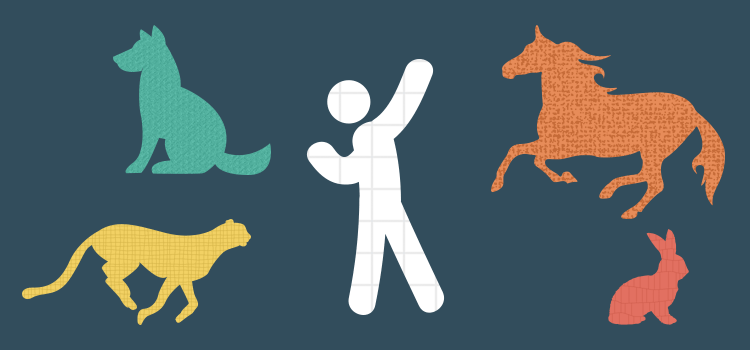
Is it the dog? Possibly the cat? Maybe it is the long-legged horse? Has to be the speedy cheetah? Well, it is the efficient camel then? Or is it none of the above. The answer may surprise you, All you need to do is gaze in the mirror to witness the planet’s most efficient and effective long distance runner.
Nature Decides Which Animal Runs the Longest
Ancient human beings did not have a competitive advantage over other superior animals of prey, which were faster, stronger, and dangerous. The bodies of ancient humans were not suited for survival in the harsh conditions of our planet. They did not have hair, claws or even weapons to defend themselves. Their survival instincts capitalized on hard work and resilience.
Running became a critical adaptive mechanism for ancestral humans. The practice, passed on across successive generations, makes human beings the only animal species that can run for extended distances at will.
A real-life illustration of this phenomenon is seen when people run for marathons 26.2 miles or even longer. Every year, millions of humans participate in short and long-distance marathons across the world, voluntarily. It’s worth noting that animals traditionally seen as fast runners such as antelopes and cheetahs are adapted for speed and not stamina. Other animals, such as dogs and horses, that can endure running long distances have to be compelled to do so. They don’t run willingly. Even then, humans still perform better than such animals.
Both modern day humans (Homo sapiens) and their predecessors, Homo erectus, have unique adaptive features that make them the planet’s best long distance runners, compared to other wild, ferocious, and fleet animals. With respect to power and speed, human beings perform poorly compared to other animals. They (humans) are slow and steady, which is an interesting phenomenon because it the main factor of their running superiority. When it comes to speed they are the turtles of the animal kingdom.
Finding Food Created Well Adapted Runners
Meat became a core component in the human diet about 2.6 million years ago. About 2 million years ago, early humans began exhibiting adaptive features that had no impact on their walking, but which made them better endurance runners. This leads to the conclusion that our meat-eating ancestors who were scavengers initially, later became running hunters. Running was an adaption that helped early man to acquire food, specifically meat from animals with the power to run. This adaptation specifically involved the development of long springy tendons in our legs and feet. Tendons work like large elastics that store energy and release it every time you take a stride while walking or running. This action reduces the energy required to take another step.
Other core adaptations that stabilize our bodies include arm swings that help counterbalance each step, large and sturdy butt muscles that maintain the upright position of our upper bodies, as well as the elastic neck ligament that keep the head steady. An even more intriguing, but highly essential adaptation is the human waist that is much thinner and more flexible than that of other primates. These features help us when running because they counterbalance the slightly off-center forces exerted with each stride taken.
The immediate benefit of these adaptations is that as humans start running, it takes just a little bit more energy to gain stamina and run faster. Other animals, however, consume a lot more energy as they begin to speed up, especially when transitioning from a trot to a gallop. This weakens their endurance over long distances.
Despite the numerous adaptations making us better runners, what makes our ability to hunt game even better is the capacity to run in the heat. This makes all the difference. We have more adaptations that help us shed off the heat generated during running. These include our ability to sweat, breathing through the mouth while running, and the fact that we’re relatively hairless. In fact, breathing through the mouth allows helps us take bigger breaths and get rid of heat. Essentially, they enable us to endure running conditions that other animals naturally can’t. Animals lose excess heat by panting. Unfortunately, they cannot pant and gallop simultaneously. Ancient humans took advantage of this weakness while hunting. They neither had to run further than the animals could trot nor run faster than the animals could gallop.All the hunters needed to do was run faster for longer while maintaining a speed slower than that of the animals as they started to gallop. Before the animals gained stamina, the hunters had already caught up with them.
Humans Used Their Skills to Their Advantage
These human adaptations helped them master hunting animals. They would do it during the hottest times of the day. This is when most animals rest. It is highly probable that humans hunted by chasing the game in the scorching heat making the animals run faster than their bodies could handle.
The humans would flush out the animals as they rested. They would repeat the entire hunting process until an animal could bear the heat no longer, eventually collapsing. Over time, humans with their very crude technologies were able to outwit and overpower stronger and more dangerous prey. The practice did not require advanced technology, had a high success rate and resulted in a lot of meat (food).
Human beings evolved to become superior scavenging hunters. They could identify their targets, run to them and kill them. Gradually, we became persistent and excellent hunters as we took our position at the top of the food chain. Thanks most notably to our unique prowess for running long distances at will!
Present day, our bodies are hard-wired to reward long distance running, which is the origin for what is known as runner’s high.
